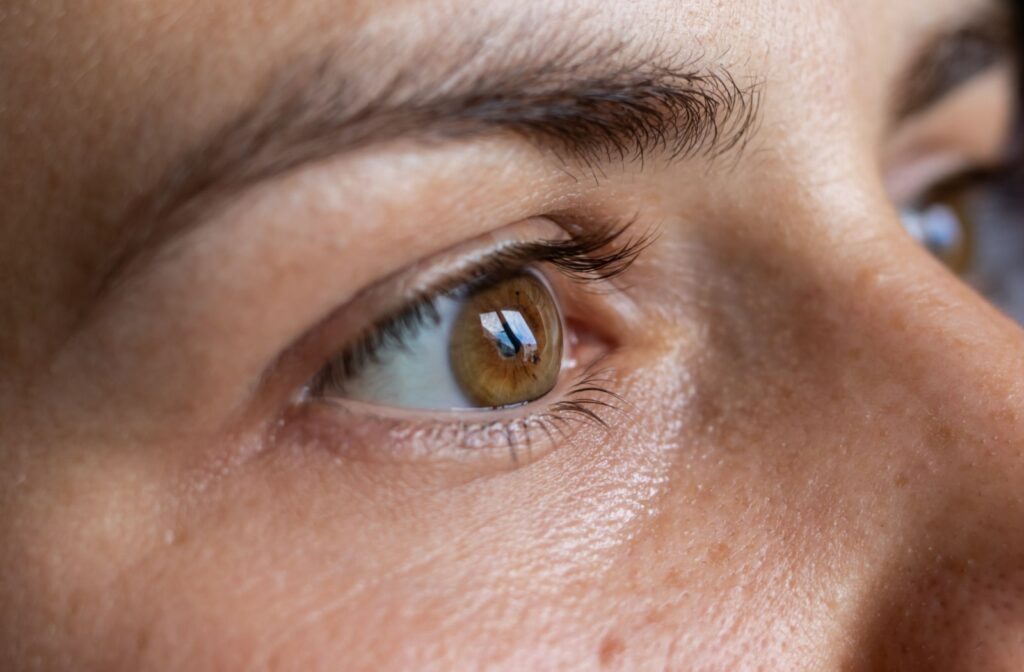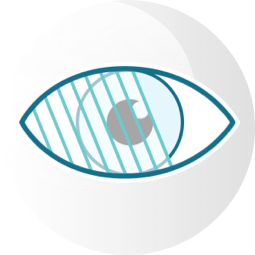When we talk about the essential parts of our body, the eyes are undoubtedly one of them. Our vision allows us to enjoy the beauty of the world around us, but we often take it for granted. People don’t usually pay attention to their eyes until they develop an eye disease or vision condition. Keratoconus is one such eye condition that can cause serious vision problems.
While there is no definitive cure for keratoconus, there are several treatments available that can help manage its symptoms. Your optometrist can examine your symptoms during a comprehensive eye exam and explain the treatments available to you.
What Is Keratoconus?
Keratoconus is a progressive eye condition that affects the structure of the cornea, the clear front dome of the eye. Over time, keratoconus causes the cornea to gradually thin and bulge outward in a cone shape, causing visual impairment.
It’s a fairly rare condition, affecting 1 in every 2,000 people in the United States. Keratoconus typically first presents during puberty, and it can continue into a person’s mid-30s. The early signs are typically mild, and you may not recognize them as a problem at first. But in time, you may notice the following symptoms:
- Blurred or distorted vision that worsens when looking at bright lights or reading small print
- Double vision
- Light and glare sensitivity
- Eye strain
- Headaches
- Increased nearsightedness or astigmatism
- Difficulty wearing regular contact lenses
Keratoconus usually affects both eyes, but the severity may differ in each eye.
An optometrist can diagnose keratoconus through a comprehensive eye exam, which includes mapping the cornea’s surface through corneal topography. Additionally, measurements of corneal thickness, along with other tests, can determine if keratoconus is present.
Causes of Keratoconus
Eye doctors are unsure of the exact cause of keratoconus, but some factors that may increase your risk of developing it include:
- A family history of keratoconus
- Eye allergies or irritation
- Chronic eye rubbing, which can weaken the cornea
- Certain genetic abnormalities that affect the cornea’s structure
Although these factors can increase the risk of developing keratoconus, some people develop this condition with no known risk factors.
What Are the Treatment Options for Keratoconus?
The right treatment for you can depend on the severity of your symptoms and your individual needs. If you suspect you may have keratoconus, it is essential to seek professional diagnosis and treatment.
Scleral Lenses
Standard contact lenses and glasses may help improve vision while keratoconus is in its early stages. Since glasses sit on your face, not your eye, most people can receive their benefits no matter their cornea shape. However, in the case of contact lenses, the bulging keratoconus causes may require you to wear a specially designed variety, such as scleral lenses.
Scleral lenses are a popular choice for people with keratoconus. Scleral lenses are large, rigid gas-permeable contact lenses that rest on the sclera (or the white part of the eye) instead of directly on the cornea. Because of their size and shape, they can create a tear-filled vault over the cornea, providing a smooth optical surface that can correct the vision errors caused by keratoconus.
Scleral lenses are custom-made for each individual, and they come in a variety of diameters, depths, and materials.
Corneal Cross-Linking (CXL)
Corneal cross-linking (CXL) is a minimally invasive surgical procedure that aims to strengthen the cornea by increasing the number of cross-links (or bonds) between collagen fibers. This is achieved by applying a combination of riboflavin (vitamin B2) drops and UV-A light to the cornea.
The riboflavin acts as a photosensitizer, enhancing the UV-A light absorption and promoting the formation of new cross-links in the cornea. Through CXL, the cornea can become stiffer, more stable, and less prone to bulging and distortion. Studies have shown CXL could slow keratoconus’s progression by up to 90% in young patients.
CXL is mainly recommended for patients with progressive keratoconus, which means their corneas are still thinning and bulging, and their vision is worsening despite using glasses or contact lenses. It is not recommended for patients with stable keratoconus or other corneal disorders.
CXL is an outpatient procedure that takes around 1–2 hours to complete. It is usually done under local anesthesia in one eye at a time. You might feel some discomfort or pressure, but it shouldn’t be painful. After the procedure, your surgeon may place a bandage contact lens on your eye to protect it from abrasion and help it heal.
Intacs
Intacs are small, crescent-shaped implants that are surgically inserted into the cornea to reshape it and improve vision. The procedure is performed on an outpatient basis and generally takes around 15 minutes.
Patients may experience some discomfort for a few days, but some people notice sharper vision as early as the next day.
Corneal Transplant
Corneal transplants are usually reserved for people who have severe keratoconus that cannot be managed with other treatments such as scleral contacts or CXL. It’s also recommended for people who have scarring on their corneas from infection or injury.
A corneal transplant involves removing a diseased or damaged cornea and replacing it with a healthy cornea from a donor. The healthy cornea is carefully matched to the recipient’s eye and then sutured in place. The procedure usually takes about 1–2 hours and can be performed under local or general anesthesia.
Specialized Lenses for Keratoconus
Keratoconus can make it hard to wear and enjoy contact lenses. At McCauley Celin Eyecare Associates, we believe scleral lenses can be a game-changer for people with keratoconus who want to improve their vision, comfort, and quality of life.
To determine if scleral lenses are right for you, book an appointment with our knowledgeable eye care professionals. We can guide you through the process to help you achieve sharper vision.
Don’t let keratoconus control your life—with scleral lenses, you can take back your sight.














